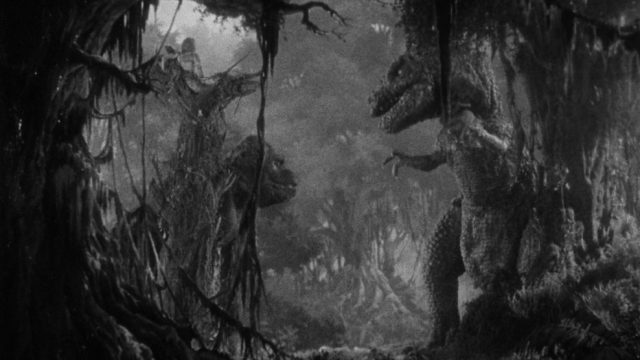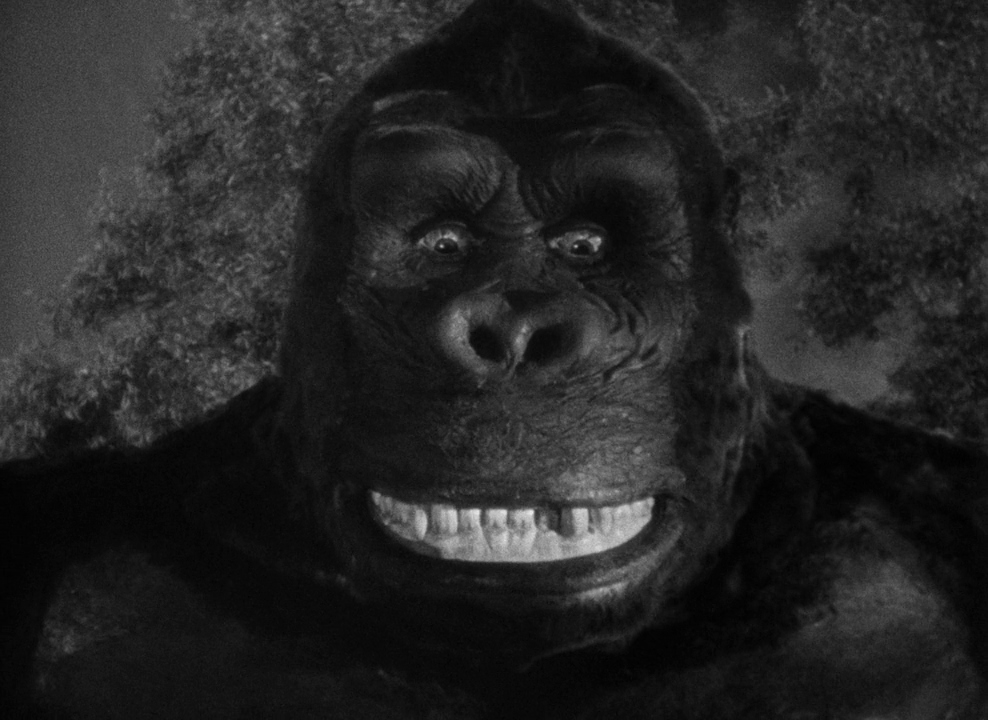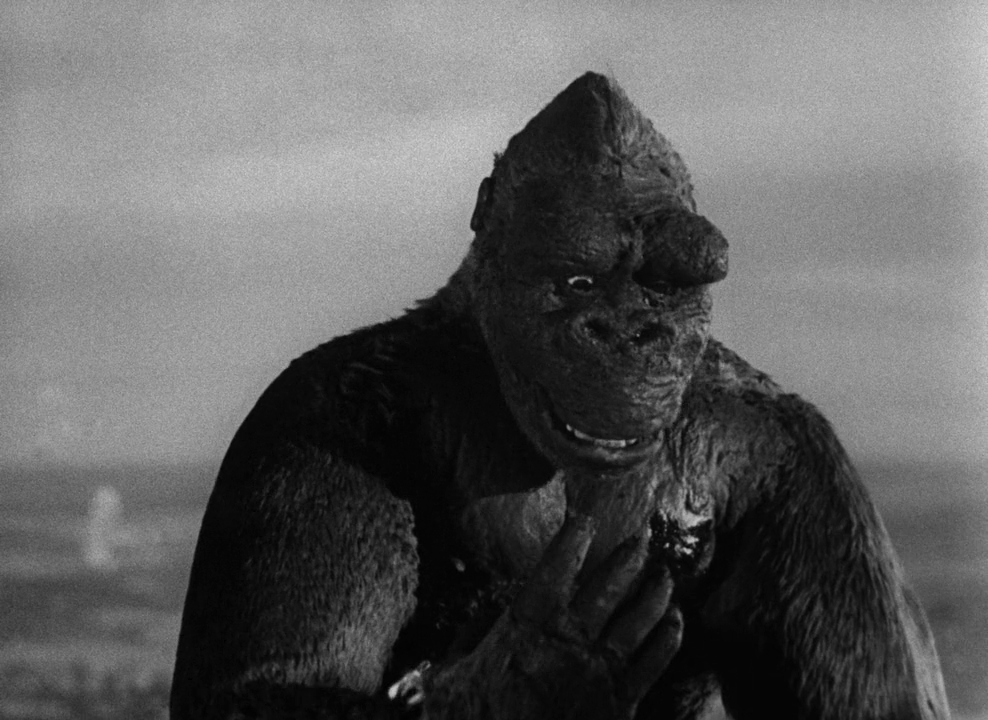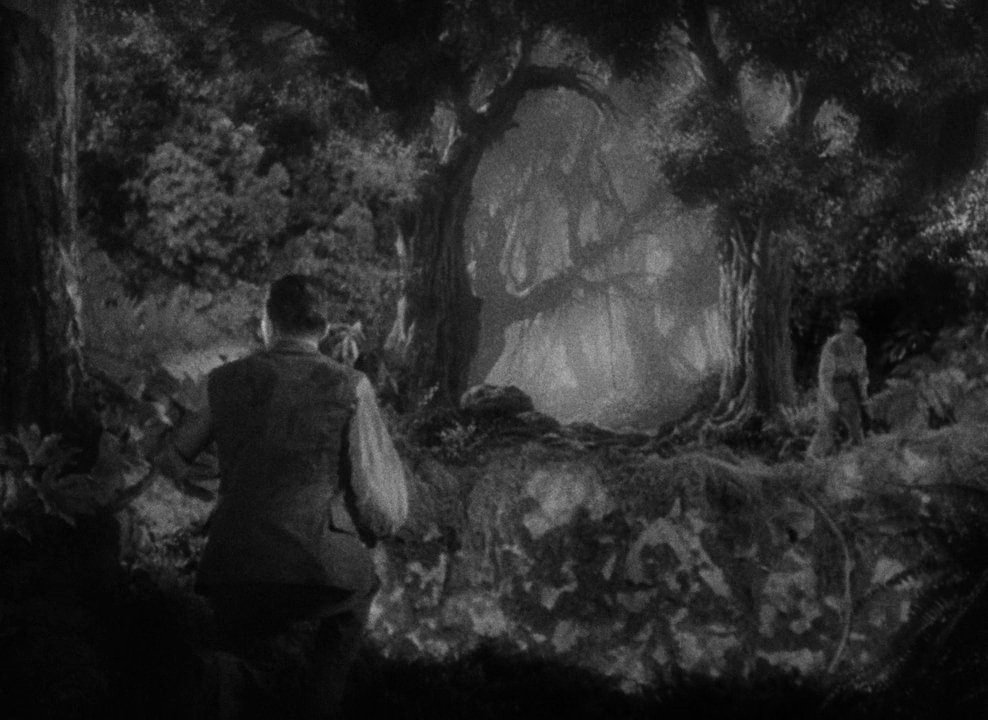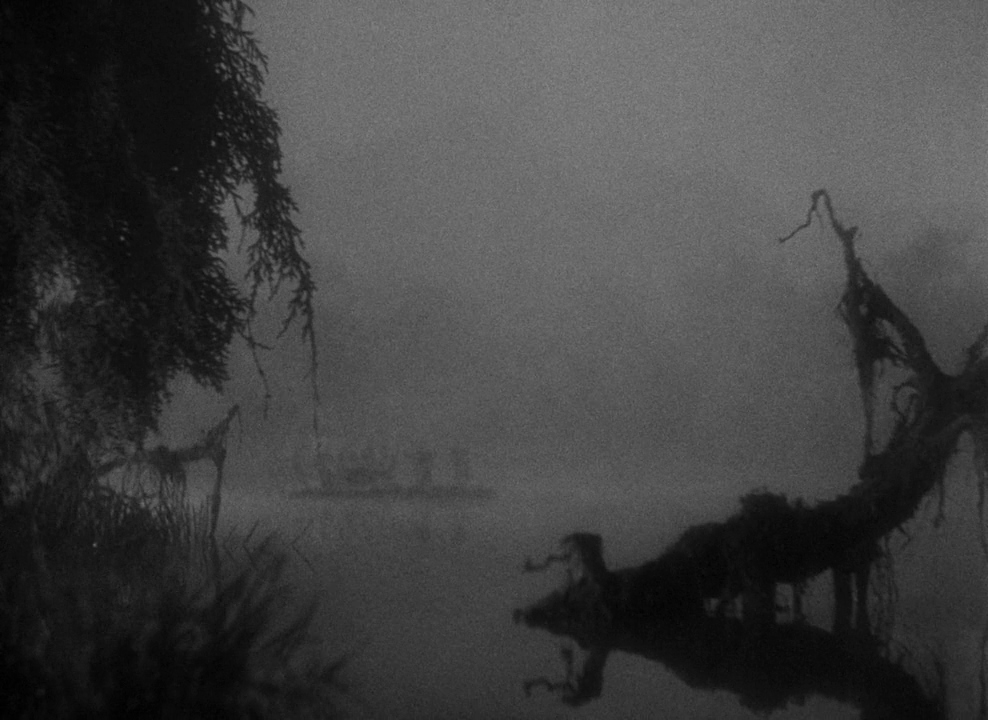By all accounts, King Kong should not be a good movie, let alone one of the all-time greats. It’s a showcase for special effects technology that’s nearly a century out of date and that doesn’t even show up until we’ve sat through almost 45 minutes of bad acting and worse dialogue. Just as much as that, it’s a showcase for racist and sexist attitudes that most of us wish we could leave in the last century.
And yet, Kong endures. Just last year, its antihero returned to the big screen and defied the odds to become a blockbuster in a time without blockbusters. I know I can’t let it go — I’ve watched it many more times than many films I can praise without any of these reservations, ever since I first caught a late-night showing on Turner Classic Movies back in high school, and I’ve already written about it — twice. This trashy, kitschy masterpiece haunts me in ways that films that strive more artfully for the same effect never could.
But I don’t think I, or the world at large, will ever run out of things to say about it. As much as we cringe at their ideas of the “primitive,” the filmmakers — director Merian C. Cooper and Ernest Schoedsack, writers Ruth Rose and James Creelman, effects artist Willis O’Brien — have tapped into something primal. I couldn’t help bringing it up in my last two attempts to tackle Kong, but it bears repeating: superheroes are often held up as the modern-day equivalent of mythology, but Kong comes closer than any of them. Not just in its flexibility to be retold and reimagined, but in the wealth of meaning packed into it. Is it about the anxieties of empire? Untamed masculinity fatally tamed by a changing world? The wrath of an ancient god on the modern city? The deadly hubris of the colonizer faced with an environment he doesn’t understand, or the smallness of all men in the face of nature? All of the above, and there’s probably plenty more.
The one thing it isn’t, no matter how many times the script insists on it, is a retelling of Beauty and the Beast, and it’s frankly disturbing how many people have interpreted a film about a monster abducting a woman who not only doesn’t reciprocate his feelings but famously doesn’t stop screaming and trying to escape, as a love story. It’s no secret Cooper and Shoedshack were tapping into racist anxieties about “race mixing” and Black virility — one of the many ways Kong has entered the realm of myth is as shorthand for Black masculinity. But it’s still striking to see Kong transform from a gorilla into a minstrel caricature when he first transitions from Willis O’Brien’s stop-motion model to animatronic head, all wide nose and wider mouth full of huge, white teeth, and tiny white eys, wiggling his eyebrows like Groucho Marx and leering like a man in nothing but a stained trenchcoat.
King Kong didn’t invent that iconography. It’s been steeped in the popular consciousness since the first encounters between gorillas and Europeans. It’d be more accurate to take our stock images of gorillas as bloodthirsty monsters and chimps as sweet, playful little people and flip them — I’m still haunted by the episode of the original Planet Earth where two troops of chimpanzees cannibalize each other.
But the more humanlike gorilla was a better vector for colonial anxieties about the humans of Africa — and it’s possible the Great White Hunters’ pride wouldn’t let them admit they were scared of the child-sized chimps. Kong wasn’t even the first movie that year to use this gorilla symbolism, but it’s a lot subtler than Ingagi, a “documentary” that purported to show the “savagery” of African tribes by faking footage of gorillas abducting and raping their women.
The racism of Cooper and Shoedshack’s portrayal of the natives of Skull Island (never actually named in the movie, though Kong does live on Skull Mountain) is even more obvious, at least to everyone but my late Grandpa, who said, “It’s hard to believe people really live like this!” (He was right, it’s so unbelievable I can’t believe anyone would believe it.)
But it’s still worth digging beyond the obvious. First of all, the dialogue clearly places Skull Island somewhere off Sumatra, and yet the Islanders are a haphazard mishmush of South Pacific and African stereotypes, and there are even Aztec designs on the wall that protects them from Kong. In other words, a classic example of the Western tendency to flatten the rest of the world into a single “elsewhere.”
Just to complicate things further, the chief is played by a Black actor, Noble Johnson, in blackface — Johnson was light-skinned enough to frequently play white characters. He also founded one of the first Black-owned studios, even before Oscar Micheaux and Within Our Gates, and he manages to keep the dignity implied by his name intact despite the costumers’ best efforts. And if that wasn’t confusing enough, his “witch doctor” is played by Steve Clemente, a Yaqui Indian. And the heroes sure seem unbothered by using the Islanders as cannon fodder to slow Kong down as he gruesomely destroys their village and eats them alive while they sit tight on the beach with their gas bombs, don’t they?
If anyone should have known better, it was Cooper and Shoedshack, who’d traveled the world making films much like their hero Carl Denham’s. In fact, the part of this movie about giant apes and living dinosaurs I’d always thought was the most unbelievable, that critics and exhibitors would demand a documentary have a love interest, comes directly from the reviews of their past films.
Maybe that explains why they were too close to Denham to realize what a shit he is. Kongnapping to one side, he refuses to tell any of his crew where they’re going until it’s too late to back out, getting most of them killed. He exploits Ann Darrow when she’s on the edge of starvation and can’t say no to her deadly new job.
Alright, that should about cover everything wrong with Kong. So what did it do right to become so unforgettable? The answer has to start with O’Brien. Cooper and Shoedshack wanted to film live gorillas figthing live Komodo dragons until they saw the rushes from O’Brien’s never-finished Creation and realized he could bring their ideas to life far more cheaply and effectively.
And is it ever effective. One thing the many remakes and reboots forget is Kong isn’t a literal gorilla. He’s an immortal, mythical being, who’s been tormenting Skull Island for lifetimes, without father or mother, despite what the 2017 Skull Island would tell you, simply existing, neither man nor beast nor god.
Kong’s an even bigger shit than Denham, and not just because he’s twenty feet tall. Besides all the Ann assault, he lashes out violently at everyone and everything, indulging in outright sadism as he grinds two of the Islanders underfoot. And yet, O’Brien gives him a soul. Like Disney, he understood that an animator’s most important job is to develop character. Even the Tyrannosaurus develops a personality in its one scene, his crouching, craven movements giving him a sense of reptilian cunning.
O’Brien claims he got the idea to go into animation from his boxing days, when he and a coworker goofed around with some statues between bouts. And it’s true you can see his firsthand experience in the boxing-like choreography of the fight scenes, contrasting Kong’s higher, strategic intelligence against the lizard-brained dinosaurs, reinforcing his status between beast and man. He can be charmingly childlike as he plays with the dead monster’s broken jaw, then frighteningly cold-blooded as he scowls and beats his chest in triumph. But then, when he sees his own blood, probably for the first time after all his years fighting prehistoric beasts, it’s heartbreaking. Besides, who hasn’t wanted to lash out violently at everyone and everything at least once?
For all King Kong’s unexamined imperial assumptions, there’s a rich vein of critique too. Kong’s tragedy is the tragedy of the colonized. Cooper claims to have been inspired by a pair of Komodo dragons that died in captivity. In The Third Eye: Race, Cinema, and Ethnographic Spectacle, Fatimah Tobing Rony compares Kong instead to Ota Benga, a Zairean man who was kept in the monkey house of the Bronx Zoo, forced to live in a cage, and who eventually killed himself. “He once was a king. Now he comes before you in chains,” Denham says, sounding an awful lot like a slave auctioneer.
Whatever his origins, Kong stands in for an older, more violent form of masculinity that’s existed in many cultures. “Toxic” is probably the word for it. But it’s also tragic. It’s hard not to admire him in his brutal ownage of his prehistoric neighbors or to suffer with him as he finds the modern world has weapons he can’t fight. It’s certainly no coincidence that Travis Bickle, the movies’ greatest representation of tragically thwarted machismo, wears an army jacket with a patch identifying him as a member of King Kong Company.
O’Brien wasn’t as confident in his creation, and panicked when he saw the impressions his team left in Kong’s fur (taken from a rabbit, of all things) jump from frame to frame. He was sure the project would be over as soon as the producers saw it, but he knew his neck was saved when one of them said, “Look how mad he is! He’s bristling!”
Even if most viewers today won’t leap to the producer’s conclusion, the fingerprints O’Brien and crew left on Kong and his opponents are essential to the movie’s magic. Now that effects are done partly with and partly by computers so that they seem untouched by human hands, Kong looks better than ever. Instead of making their contributions invisible, the movie invites us to watch the animators like necromancers at work, giving life to dead matter. In some scenes, you can see the dinosaurs whip their clay tails around with boneless grace. In others, like the battles with the stegosaurus and tyrannosaurus, these tiny figures seem to move with thousands of pounds of weight.
Even the goofs, like Kong’s hair, only make the trick seem more magical, like the thrill of the uncanny when Kong picks up Ann and she turns into a doll, or when he shakes the sailors off the log and the ragdoll-like models are just barely believable enough to create horrific images of bones painfully bending in directions they should never bend. I’ll admit, though, that second one’s pretty heavily dependent on the actors, who, depending on the quality of their screams, can make the scene look like either pure terror or some kid throwing dolls around.
And speaking of the soundtrack, there’s also the vividly uncanny, unearthly sensation of hearing obviously electronic sounds coming out of the tyrannosaurus’s mouth, a trick Ishiro Honda would repeat for his monster’s metallic howl in the original Godzilla. And more than any foley man, the filmmakers owe their success to Max Steiner and his ominous, operatic score, playing the audience’s pulse as easily as his orchestra play their instruments. This is the rare movie to use overcranking for drama instead of Benny Hill-style comedy, and the rarer one where it actually works.
The surrealists loved Kong, and no wonder. O’Brien took inspiration from the great engraver Gustave Doré and the proto-Surrealist Symbolist Arnold Bokclin to create shadowy, misty, impossibly teeming jungles and swamps straight out of a dream.
And when Kong runs wild in New York, it has the same effect as Surrealist painters like René Magritte (or Bocklin, while we’re at it) who disorientingly dropped fantastical images into everyday surroundings. There’s literally hundreds of movies about monsters rampaging through the big city. But, maybe because their effects were too seamless, none of them made it look this vividly like something that should not be and definitely should not be here has invaded our reality. And even though it’s obviously using cheesy old rear projection techniques, the scene of Kong dangling some poor woman hundreds of feet above the crowd below is still dizzyingly horrifying.
Maybe the Surrealists were right. Kong has endured so long in the collective consciousness because it digs so deep into the collective unconscious of dreams and myths, exploiting the colonial anxieties of its time and reaching beyond them to a realm of nightmare and endlessly plastic symbolism that will never grow old.

